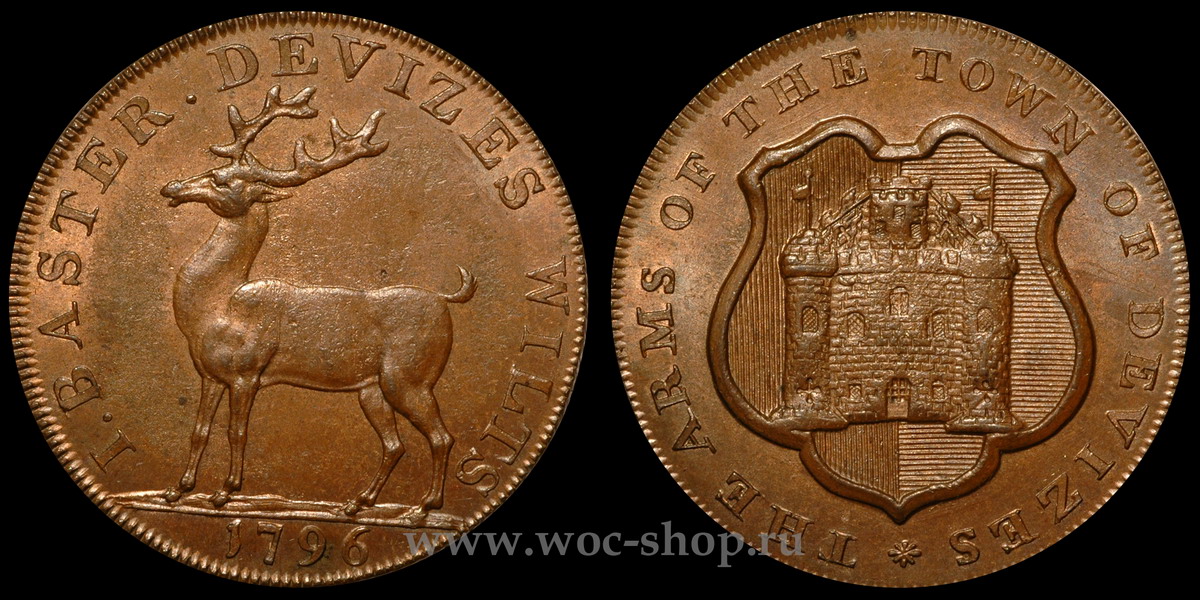
Online collections
monedastodas.com
All collections » Tokens » Devizes Halfpenny
On the front side is the coat of arms of the city of Devizes. Circle legend: "THE ARMS OF THE TOWN OF DEVIZES".

Devizes Castle was built by Bishop Osmand of Salisbury in 1080, although the city is not mentioned in the Domesday Book. Since the castle was located on the borders of the estates of Road, Bishop's Cannings and Pottern, it was known as "Castrum ad Divisas" (Castle on the borders), hence the name Devizes. The first castle in the form of Motte and Bailey was built of wood and burned down in 1113. The new stone castle was built by Osmand's successor Roger of Salisbury (?-1139). In 1141 Devizes received his first charter allowing organized trade in the markets. Prisoners were kept in the castle, including (since 1106) the eldest son of William the Conqueror, the Duke of Normandy Robert Courtgeuse (Robert Courteheuse, c. 1054-1134). In the XII-XIII centuries, thanks to artisans and merchants, the city began to develop and grow outside the castle. Wheat, wool and yarn, cheese, bacon and butter were the main commodities at Devizes Market in the early 17th century. During the Civil War (1642-1645) the castle was captured by the royalists, but in 1645 it was liberated by Oliver Cromwell (Oliver Cromwell, 1599-1658). In 1648, as part of a policy of destroying the opposition's fortifications (a process known as Slighting), the castle was destroyed by order of Parliament.
The reverse side depicts a standing deer and a circular legend: “I. BASTER. DEVIZES WILTS 1796.
Edge ribbed diagonally (b). There is a rare variant (a) with an edged inscription: "BREECHES AND GLOVE MANUFACTORY -XXX".
According to Samuel, John Buster was a freeholder and brewer in Devizes, and the deer probably refers to the name of his brewery: "Stag" or "White Hart Brewery". However, the edge inscription on a rare version indicates that John Buster was engaged in tailoring trousers and gloves, then the deer can be depicted because deer skin was used in production.
Engraver - Arnold (Arnold), manufacturer - Latvich (Lutwyche). Issued 10 cwts (1 cwts = 100 lb = 45.359237 kg).
Dalton & Hamer: 2b